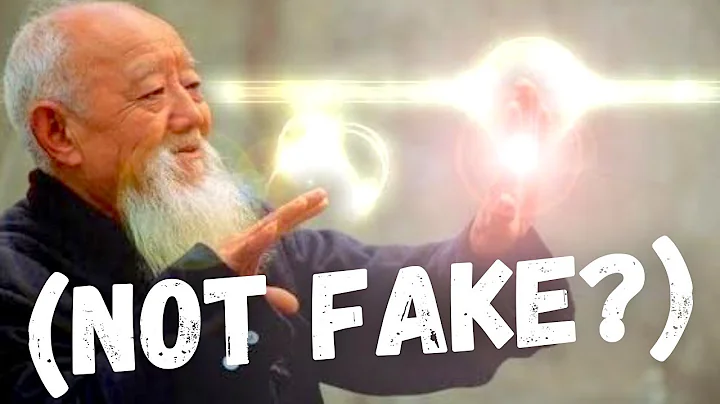We all know that yoga is a movement around the spine. Before, we talked about how to step into the back bend step by step, and how to make the forward bend pose more in place and deeper. Today we will talk about twists in yoga asanas.

Part 1: The structure related to the spine and torsion
The movement function of the body is determined by the structure. Let’s take a look at the structure of the spine. . The following picture

This picture shows the spine from the back of the body and the side of the body. The picture is a bit messy, but it’s okay. I’ll show you a few points that need to be used for reversing, one by one, and focus on them.
1, vertebral body. The spine is a long rod formed by stacking many vertebral bodies. Of course, the vertebrae are fixed and stabilized by joints and various ligaments and other soft tissues, forming a whole.
2, articular joints. Each independent vertebral body has articular processes above and below it. The articular processes between the two adjacent cones are snapped together to form a joint, which we call the articular joint. Because the articular processes of the cervical, thoracic and lumbar spine are different, the structure of their articular joints is also different.
Cervical vertebrae, picture below

thoracic vertebrae, picture below

a7d#
lower picture 
The facet joints buckle independent vertebrae tightly together. While ensuring the stability of the spine, it also limits the flexibility of the spine, especially the spine The magnitude of the rotation.
- The rotation range of the cervical spine is 50 degrees, the rotation range of
- is 35 degrees, and the rotation range of
- is only 5 degrees.
You can look at the occlusal surfaces of the facet joints of the cervical spine, thoracic spine and lumbar spine. You can imagine that their rotation ranges are different.
3, sacroiliac joints. Everyone knows that the sacrum is the lowermost part of the spine, and the ilium is a part of the pelvis. The sacroiliac joint is the joint that connects the spine and the pelvis. This joint is a micro-motion joint with a small range of motion, but it is very stable and has almost no rotation function. The pelvis and sacrum can be regarded as a linkage unit.
Summarize the first part: 1. The spine consists of four parts: cervical, thoracic, lumbar and sacrum. 2. The structure of the facet joints between the vertebrae causes the amplitude of each part of the rotation to be different. The cervical spine is the most flexible, followed by the thoracic spine. The torsion of the lumbar spine is only 5 degrees, while the sacrum and the pelvis are connected together, and there is almost no function of torsion. The two must be twisted together.

The second part, how to make an effective twist
1. Exhale into the twist . Whether standing, sitting or lying down, before entering the twist, first inhale and extend the spine, expand the chest cavity, create space for the turn, and then exhale into the twist
2. The twist starts from the abdomen, also That is to say, starting from the lumbar spine, it drives the entire spine torsion . Let's expand on it in detail.

First of all, let’s take a look at the effects of twisting asanas: flexible spine; exercise core muscle groups, strengthen waist and abdomen muscles; squeeze and massage abdominal internal organs, promote bowel movement and enhance Digestive system function. In other words, its effect is mainly for the waist and abdomen, whether it is muscleMeat is also an internal organ, all in the lumbar spine. Therefore, the lumbar segment must be involved in twisting, otherwise it is meaningless.
But in fact, when we are doing twisting poses, many people just do a fake twist, even though you work hard. But if the direction is wrong, no effort will be made to work hard.
Let’s take a look at the twists in the following pictures and compare which category you belong to? (Observe the direction of the elephant trunk nose on the model's T-shirt)
Figure 1, Torsion only occurs in the cervical spine.

This twist is almost just a twist of the head, and the right shoulder opens out a bit, nothing more. So you see that the direction of the elephant trunk's nose is still straight ahead. There are many people who have done this to reverse it. This is also the original intention of writing this article, because I found that my students have done this. In the picture below, make sure you are not doing head movement, but doing twisting.

Figure 2, the following figure

At first glance, this scan is good and seems to be very deep. But look carefully at the direction of the elephant trunk on his T-shirt, hey, why is still facing the front?
This is a hidden and deeper fake twist : The model's right chest is lifted upwards and leaned backwards, seemingly working hard to twist. In fact, the chin is raised, the cervical spine is twisted, the right thoracic spine is opened backward, the lumbar spine remains in place, and the abdomen is not involved at all.
Such false twists are the most common and the most difficult to detect.
Figure 3, below

This small twist is the real twist we want to do. Although the amplitude is small, you see The direction of the elephant trunk god on his clothes has changed. is no longer facing the front, but facing the right front. Although the magnitude is small, it is really doing an effective twist.
This kind of twisting can achieve our goal, exercise the core muscles, exercise the waist and abdomen muscles, massage the abdominal organs
Part 3: Do a safe twist .
1. Do torsion while ensuring the spine is upright.
torsion is a left-to-right rotation around the center line of the body. The spine always remains upright. The spine does not bend forward, bend backward, or bend sideways, and it is in an upright state.

To give you an analogy, I often see reports on the Internet that when a skyscraper is windy, the building actually rotates slightly. If we regard this skyscraper as the spine of the human body. Can you imagine if this Ferris wheel is not upright, but twisted when it leans forward, backward or sideways? First, the pressure on the spine will increase, and secondly, it will produce squeeze.
And when we twist the towels, we straighten the towels and twist them. No one said that we twist the towels at an angle.
So what does it look like in specific yoga asanas? Let's take an example.
Yoga Sage Maric Pose. The following figure

The left side small picture shows that the spine is upright torsion, and the right spine has changed. There are two ways to judge whether your spine is upright: both shoulders are flat and the waist is not squeezed. And keeping the spine upright can also ensure that the strength of torsion is evenly applied to the entire spine.
PictureTo be honest, it’s not ridiculous to tell the truth. The spine changes from the upper part of the thoracic spine. Some people start to lean to one side from the lumbar spine and then twist. The pressure is also more severe.
One more point is to explain, or the above Sage Maric style: In the process of tying the hands, the spine is allowed to bend, after entering the pose, remember to restore the spine to an upright position . In other words, you can first bend your spine, tie your hands, and then return to an upright position. This is allowed. Especially people with short upper body and long legs.
There is another situation in the upright spine, spine is straight, but not upright, but oblique . The following figure

shows that the spine is straight, but the entire center of gravity has moved to the back of the body, and the spine is oblique. The solution is simple: keep your hands closer to the body, stretch your arms and support the ground, and actively create an upward force for the spine.
2. When twisting, should the pelvis on the other side remain fixed?
Hearing this, many yoga practitioners or yoga teachers will say: In twisting asanas, the pelvis should remain stationary. In fact, I used to think so, until I met a practitioner who had injured the sacroiliac joint, made me rethink the problem, and consulted my yoga teacher and companion.

We talked about in the first part of the article: The spine and the pelvis are connected by the sacroiliac joint, and the sacrum and the pelvis are linked.
For people with very healthy and stable sacroiliac joints, it does not matter if the pelvis remains motionless during twisting. But for those who have pain in the sacroiliac joints or the sacroiliac joints are very flexible, it is safer to twist the sitting bone on one side and lift the pelvis a little bit.
Then let’s take a look at what kind of effect will the twisting action have if the pelvis on the twisted side is lifted up a bit.
Maybe many practitioners will find in the practice that if the pelvis is lifted a little and twisted, it will go deeper. But in fact, this feeling is wrong. If the pelvis is used as the base of the spine, a little lifting of the pelvis is equivalent to the twisting of the base. In other words, the base was originally twisted right in front of you, but now the base is 5 degrees to the left and you twist it again. Its impact on the torsion is nothing more than that, and it does not make the torsion itself undergo essential changes . It is equivalent to that when we do yoga, the yoga mat was originally laid for the front, and we practiced on it. Now the yoga mat is a bit to the left, but this does not affect the angle at which we practice on it.
Magic chair twist, the following picture

The left knee in the right picture comes out a little, indicating that the right hip has turned forward a little. But it does not affect the effect of the reversal.
Triangular twist, the following figure

In the right figure, the left crotch is a little forward, and it will not affect the completion of the twist.
Split leg forward bend twist, the following figure

You can try it when practicing twisting poses. Allow the pelvis on the same side to rotate, You will find that breathing is much smoother. In fact, in the forward bending pose, the pelvis is tilted forward; in the backward bending pose, the pelvis is also tilted backward; in the twist pose, you can also allow the pelvis to be lifted up and twisted to protect the sacrum. Stability of the iliac joints and lumbar spine.
Of course, as I said earlier, this is not absolute. If your sacroiliac joints are healthy, you can keep your pelvis still, but the pelvis on the same side is slightly lifted, and there is no effect.

Part IV: To summarize the practice steps of twisting poses.
1, inhale, extend the spine,
2, exhale, tighten the abdomen; put the consciousness on the waist and abdomen, let the waist and abdomen drive the whole body to twist to one side; look at the shoulder extension line Direction. (Don't turn your head back desperately, just look at the extension line of your shoulder)
3. Inhale, extend the spine and expand the chest cavity, so that the spine is upright.
4. Exhale and hold.
5, restore, reverse exercise

Follow Fanyi, share health and beauty.





















